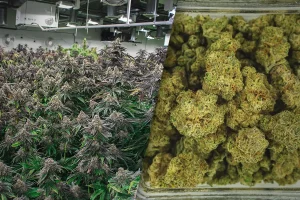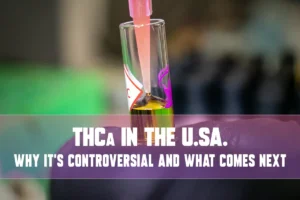
Mastering the Cannabis Harvest: Pro Tips for Cutting, Trimming, Curing, and Storing Your Crop
The harvest season is the most anticipated time for cannabis growers — when months of careful cultivation finally pay off. But cutting down the plants

As cannabis becomes increasingly mainstream in the United States, confusion still reigns over the difference between marijuana and hemp, two forms of the same Cannabis sativa plant species. While their visual similarities and shared lineage make them hard to distinguish, the legal, chemical, and regulatory implications between them couldn’t be more different.
In this article, we break down the key differences between marijuana and hemp, compare major and minor cannabinoids, explore the evolving legal grey area, and highlight the difficulties faced by both enforcement agencies and consumers navigating the growing cannabis marketplace.
The primary distinction between marijuana and hemp lies in their THC content… the cannabinoid responsible for producing psychoactive effects or the “high.”
Despite being the same species, these plants are treated entirely differently under U.S. law.
The cannabis plant contains over 100 cannabinoids, with two dominating public conversations:
But the cannabinoid conversation doesn’t stop there. Increasingly, products feature minor cannabinoids like:
The wide variety of cannabinoids has enabled a wave of innovative formulations, but also a lot of confusion for patients and recreational users alike.
The 2018 Farm Bill federally legalized hemp and its derivatives (including CBD and Delta-8), provided the THC content stays below 0.3%. However, marijuana remains a Schedule I controlled substance under the DEA, despite being legal for recreational or medical use in 38 states.
This duality has created:
In states like Texas, Georgia, and South Carolina, Delta-8 products technically derived from legal hemp have caused legislative panic and rapid regulatory crackdowns.
Law enforcement and regulatory bodies face unprecedented challenges in cannabis regulation:
The DEA and FDA have repeatedly issued warnings and policy updates, but remain inconsistent and often reactive.
For patients seeking relief or patrons browsing for recreational highs, the retail experience is often overwhelming.
Consumers with specific medical conditions (e.g., epilepsy, anxiety, chronic pain) must often go through trial and error to find what works, and that process can be expensive, disheartening, and occasionally dangerous.
As cannabis policy continues to evolve, stakeholders across the industry, including growers, processors, lawmakers, patients, and enforcement agencies, agree on the need for clear national guidelines that reconcile hemp and marijuana regulations.
Accurate product labeling and third-party lab testing standards about cannabinoids, their effects, and safe usage. Technological solutions to assist law enforcement and regulators.
The U.S. Department of Health and Human Services (HHS) recently recommended reclassifying marijuana as a Schedule III drug, a move that could significantly shift federal enforcement policy in 2025 and beyond.
The cannabis plant remains a paradox in American society: widely used, poorly understood, and inconsistently regulated. The line between marijuana and hemp grows thinner by the day, with cannabinoids like Delta-8 blurring regulatory boundaries and complicating enforcement.
As legalization efforts expand and federal guidelines slowly catch up, the need for transparency, education, and consistency has never been greater for both the consumers who depend on cannabis and the agencies trying to regulate it.

The harvest season is the most anticipated time for cannabis growers — when months of careful cultivation finally pay off. But cutting down the plants

Is THCA legal? Explore the fast-evolving U.S. debate over hemp-derived THCA, including industry divide, consumer safety, regulations, economics, and outlook. What is THCA, and why

As cannabis cultivation continues to expand in legal markets, growers are increasingly facing one of nature’s toughest challenges… extreme summer heat. Unlike indoor grow operations

As cannabis becomes increasingly mainstream in the United States, confusion still reigns over the difference between marijuana and hemp, two forms of the same Cannabis

Big changes are blooming at NuVue Pharma — and it’s all good news for your wallet. We’ve heard your feedback and looked closely at how

Despite over half of U.S. states legalizing cannabis for medical or recreational use, federal legalization remains elusive. While public opinion strongly favors reform and the

As the U.S. cannabis industry continues to thrive, driven by expanding state-level legalization and the growth of both medical and adult-use markets, new questions are

Day 1: Clue 1: This game is no trick, to find the Easter Egg you must be quick, get too close today, and I might

In a landmark shift for Colorado Springs, NuVue Pharma is set to commence recreational cannabis sales on April 15, 2025. This development follows a series

Colorado’s cannabis industry is poised for significant changes with the introduction of House Bill HB25-1209, titled “Marijuana Regulation Streamline.” This bill aims to enhance regulatory